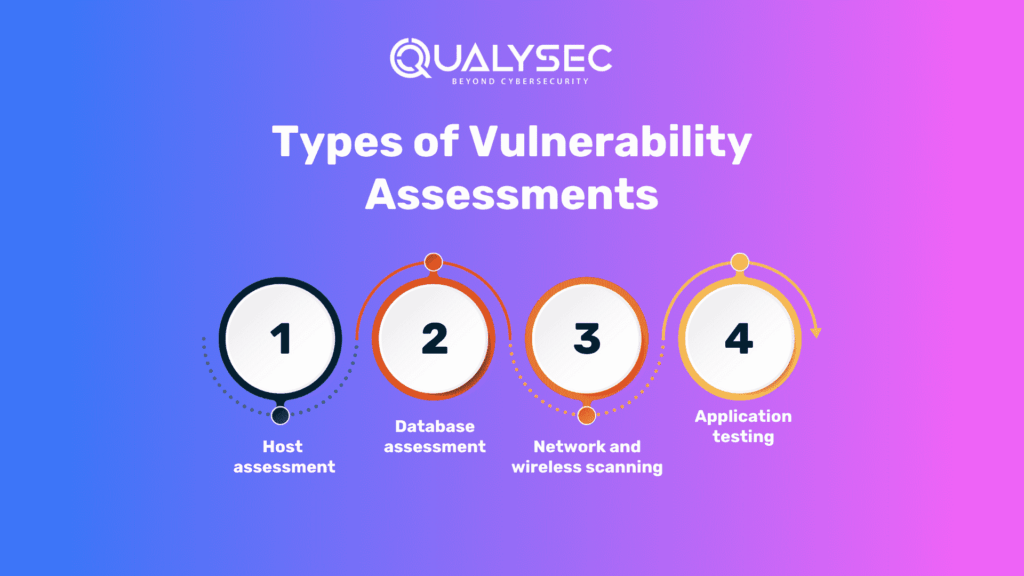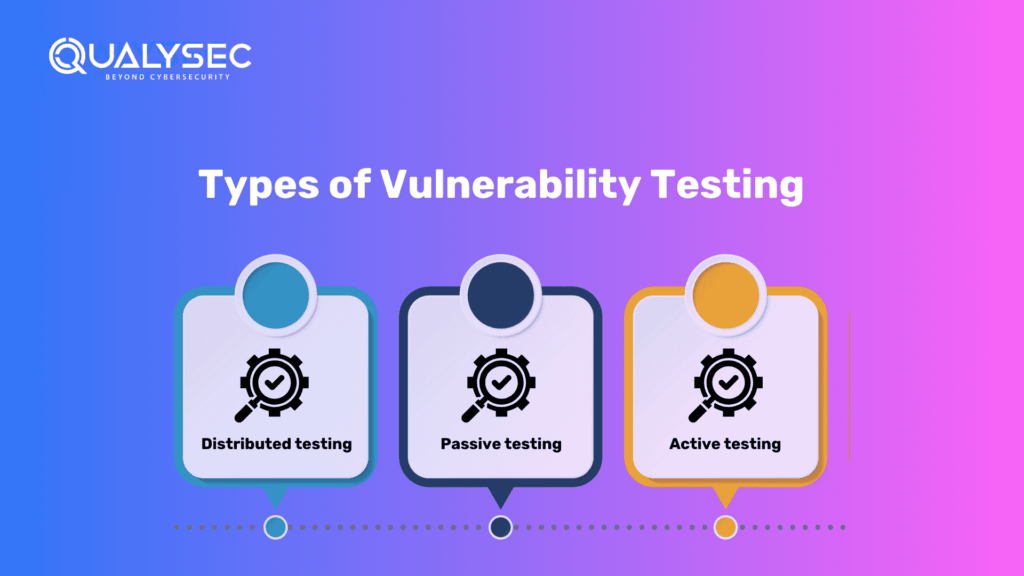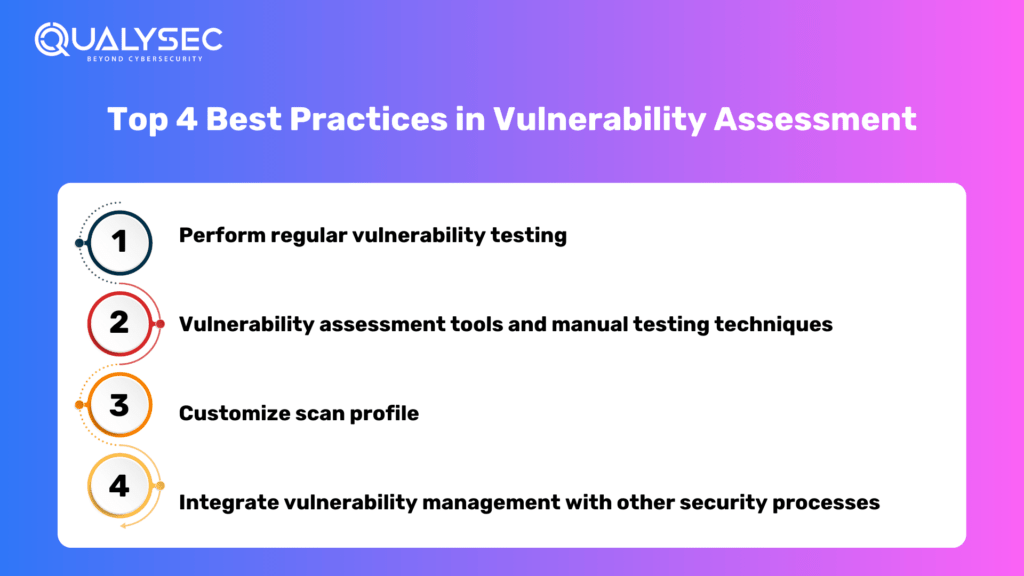Application Vulnerability Assessment is essentially scanning computer systems, networks, and software for threats or weaknesses along with the inherent risks they introduce.
Vulnerability assessments performed by conducting black box or grey box security testing replicate in real life the scenarios of how hackers attack applications. After all every application is a black box from a hacker’s point of view and they only brute force various types of attacks using high-tech scanners.
Vulnerability Assessment and Penetration Testing (VAPT) helps organizations figure out where they might be at risk to prioritize remediation based on the severity level.
What is the Objective?
The objective of the Application Vulnerability Assessment is to find vulnerabilities in your defenses, which could be taken advantage of by unauthorized users to get access to systems or data. Your flaws may exist in your:
- Network and wireless connections
- Webs and web applications
- Operating systems and software applications
- Databases and Data Storage
- Policies and Procedures
Types of Vulnerability Assessments
Vulnerability assessments come in different types depending on what assets you are testing and how. Common ones include:

- Host assessment: This is the assessment of individual computers or devices to check for security misconfigurations and missing patches in operating systems, software, and passwords. These checks secure individual endpoints against possible attacks.
- Database assessment: To identify misconfiguration, excessive privileges to users, weak encryption keys, insecure API calls, bad access logging practices, and undetected security vulnerabilities resulting in data exposure or manipulation, a database scan is crucial, which helps guard sensitive data stored on databases.
- Network and wireless scanning: Scans the networked devices, such as firewalls, routers, and switches, for any open ports with insecure protocols in place and a weak authentication policy. Scanning on a periodic basis ensures proper configuration and maintenance of your network infrastructure.
- Application testing: Testing websites and software programs for coding flaws like SQL injection, cross-site scripting, and other common web vulnerabilities that could be exploited by malicious hackers. This assessment is critical for securing the apps your business runs on.
The type(s) of assessment that you need are dependent on the size of your organization, its industry, risk profile, and compliance requirements. Larger firms tend to cover all types continuously, whereas smaller businesses may restrict themselves to their most critical assets, perhaps scheduling a quarterly or annually. What is paramount is to cover your bases regularly.
Types of Vulnerability Testing
So how do you actually go about performing an application Vulnerability Assessment? Again, it depends on your goals and resources, with several methods available:

1. Distributed testing
In distributed testing, you would use multiple scanning tools from various locations to test your systems all at once. Instead of scanning from one single point, you’re using various vantage points to get better coverage.
This approach is helpful when you want a more complete view of your security gaps, as some vulnerabilities only show up from certain locations or conditions. It also provides a better simulation of real-world attack scenarios, where attackers may target different network paths or exploit regional vulnerabilities. By distributing the scanning load across multiple points, you also reduce the performance impact on your systems.
2. Passive testing
Passive vulnerability scanning is like looking in through a window without touching anything at all. You use the monitoring tool to scan network traffic and system configurations for potential security holes but don’t try to probe or interact with the target.
This non-intrusive method puts no strain on systems or triggers false alarms, which makes it especially useful for environments where production is critical and system performance is at its best. On the other hand, this might not be a good starting point in identifying zero-day vulnerabilities or deeper misconfigurations that require active engagement.
3. Active testing
In contrast, active testing is more akin to opening the window and poking around inside. You use a tool to simulate the actions of an attacker, sending carefully crafted packets to systems to see how they respond.
This hands-on approach gives a much more realistic view of how your defenses would hold up against a real adversary. Where basic active testing identifies potential vulnerabilities, advanced techniques such as penetration testing and red teaming go a step further by actually exploiting these vulnerabilities (within legal and ethical bounds) to assess real-world exploitability. You can find deeper configuration and patching flaws but have to be careful not to disrupt production systems.
“Security vulnerabilities evolve as fast as technology does, which is why assessments must be ongoing”
Explore More: Vulnerability Testing in Cyber Security: Types, Tools and Methods
Top 4 Best Practices in Application Vulnerability Assessment
To get the most value out of your vulnerability assessments, follow these proven practices:

1. Perform regular vulnerability testing
New vulnerabilities are being discovered daily, thanks to advancing technology and sophisticated attackers. Security checks are becoming outdated rapidly. Develop a routine schedule for testing according to your industry, risk profile, and compliance needs. A minimum would be to conduct internal and external scans every quarter. But consider doing it monthly or even weekly for your most sensitive assets. To maximize security, implement continuous monitoring that detects emerging vulnerabilities.
2. Vulnerability assessment tools and manual testing techniques
Automated scanners are good for finding common vulnerabilities quickly and consistently. However, they may miss more subtle flaws that require human intuition to be discovered. Supplement your automated assessments with manual testing techniques like penetration testing, where skilled ethical hackers simulate real-world attacks.
3. Customize scan profile
Not all systems are created equal. Critical vulnerabilities for web servers may be less vulnerable to printers. Tailor your scanning profile to the unique characteristics and needs of each asset group. Use different sets of rules, plug-ins, and configurations for servers, endpoints, databases, and network devices. This targeted approach prioritizes the appropriate topics for each context.
4. Integrate vulnerability management with other security processes.
Vulnerability management works well when it is a part of a bigger security plan. It should be tightly integrated with your other security processes, such as patch management. Configuration management and response to events Use your results to inform and prioritize these other activities. For example, enter your scan data into your patch management system to apply automatic fixes or into your SIEM to tie it to threat data.
Latest Penetration Testing Report

Best Vulnerability Assessment Tools
You can’t really do a thorough application vulnerability assessment without the proper tools in your toolbelt. Here are some of the most effective types of tools on the market:
1. Network scanners
Network vulnerability scanners are the backbone of any scanning program. These devices scan for automatically known vulnerabilities against your networked devices, servers, and endpoints. There are Nessus, OpenVAS, and Qualys among popular scanners.
2. Web application scanners
Web application vulnerabilities such as SQL injection and cross-site scripting are some of the most common and dangerous threats facing organizations today. Those flaws usually slip past a traditional network scanner because they need to understand the application logic deeply. Specialized scanners, such as Burp Suite and OWASP ZAP, focus on finding security holes in websites and web services. They crawl your applications and test for common coding mistakes and configuration errors.
3. Cloud-based Vulnerability Platforms
With more and more workloads shifting to the cloud, including your cloud assets in your vulnerability assessment is extremely critical. Most on-premises scanners blind you when dealing with cloud services, so a completely different set of solutions is made to monitor the whole hybrid environment – from the single console. Vulnerability management platforms, like Tenable and CloudSploit, connect with APIs to give a better view of your whole infrastructure that runs from on-premises to the cloud.
4. Scanners for databases
Finding setup errors, overly elevated rights, and unpatched vulnerabilities in widely used database management systems (DBMS) is the main goal of database vulnerability scanners. They are essential since databases frequently contain the most sensitive information about your company. Beyond identifying technical flaws, specialized tools like DBProtect and AppSpider aid in ensuring appropriate access limits and adherence to security standards.
Qualysec’s Streamlined security and IT management
Want to take your vulnerability management program to the next level? Check out Qualysec’s all-in-one IT platform.
Qualysec brings together identity and access management, device management, and security monitoring in a single system of record. This unified approach gives you unparalleled visibility and control over your IT environment.
With Qualysec, you can automatically provision and de-provision user accounts across hundreds of apps based on HR data.
- Enforce least-privilege access policies and multi-factor authentication (MFA)
- Deploy, configure, and secure laptops, desktops, and mobile devices in minutes.
- Monitor and remediate threats in real time with integrated endpoint detection
- This helps generate compliance reports and security KPI tracking all from one dashboard.
Qualysec helps you make the connection between vulnerabilities and the rest of your organization by bringing HR, IT, and security together on a single platform. You can identify which workers and gadgets are most vulnerable and act quickly to fix problems before they turn into security breaches.
This includes conducting Application Vulnerability Assessment to identify potential weaknesses in your applications. Explore Qualysec’s Advanced VAPT Services here!
Talk to our Cybersecurity Expert to discuss your specific needs and how we can help your business.
FAQs
1. Do regulatory compliance requirements need vulnerability assessments?
Regular vulnerability assessments are required by the majority of data protection requirements. For instance, HIPAA mandates recurring security assessments, while PCI DSS mandates quarterly scans for credit card payment processing. Vulnerability evaluations are frequently assumed as part of a larger risk management program, even if they aren’t mentioned explicitly in a rule. To learn more about your particular responsibilities, speak with your legal and compliance departments.
2. What is the difference between a vulnerability assessment and penetration testing?
Vulnerability scanning systematically looks for known security weaknesses with the aid of automated tools. A penetration test, however, simulates real attacks on those vulnerabilities. So to think, a vulnerability assessment finds all the entry points whereas pen testing attempts to break into them. Many organizations will first run regular vulnerability scans and will annually or at random times, do pen testing on their critical assets.
3. How are vulnerabilities prioritized?
Organizations focus on vulnerabilities along four key dimensions: severity (degree of damage possible), exploitability (how hard it is to exploit), business context (impact of the exploited systems on your business), and existing controls (controls already implemented). While score-based systems such as CVSS (0-10 scale) help rate technical risk, do not chase only high scores but rather what is most important for your business.
4. What is a vulnerability checklist?
A vulnerability checklist is a systematic guide to evaluate the security controls of your environment. Commonly, this will include network security, system settings, access controls, data protection, and physical security. Organizations utilize vulnerability checklists to help them in the guidance of their vulnerability assessment and remediation activities. It helps them ensure consistency and completeness in security posture through the systematic evaluation process.






























































































































































































































































































































































































































































































































0 Comments